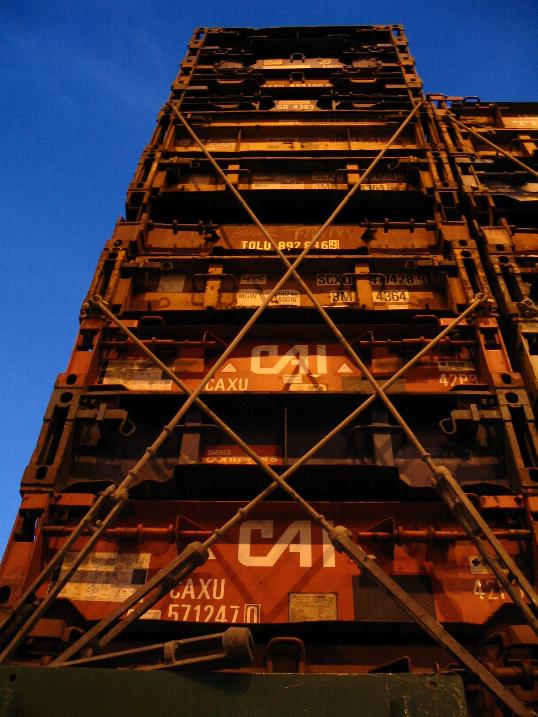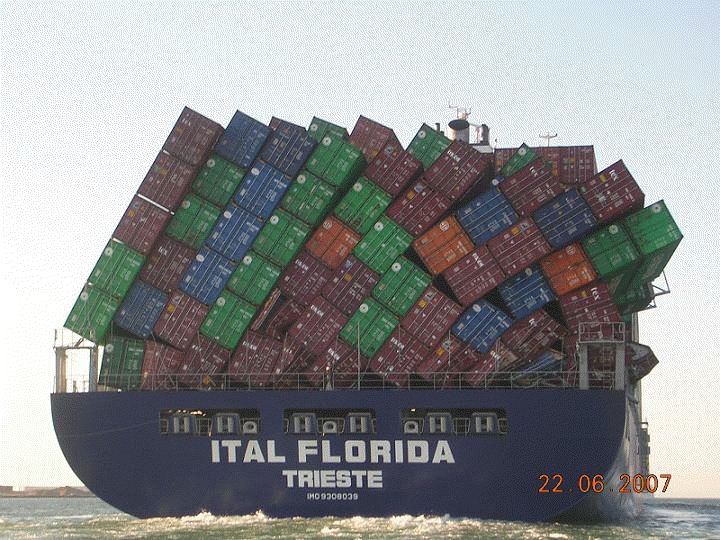by gprimr1
I spent the week in the California watching countless stack trains and two questions keep bugging me:
1.) What keeps the top container on double stacks from just falling off on turns?
2.) When you have a small container and a big container, why do they put the big one on top of the small one?
1.) What keeps the top container on double stacks from just falling off on turns?
2.) When you have a small container and a big container, why do they put the big one on top of the small one?
-Greg Primrose
Co-Owner, Railroad.Net
Ave Atque Vale
Co-Owner, Railroad.Net
Ave Atque Vale

